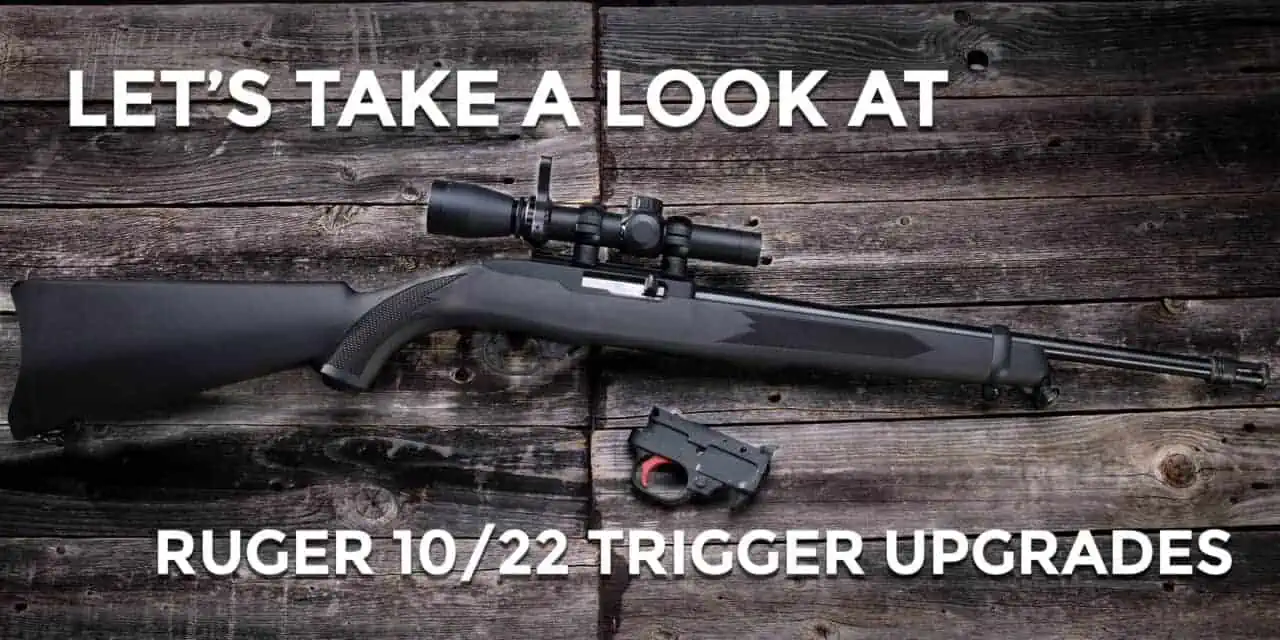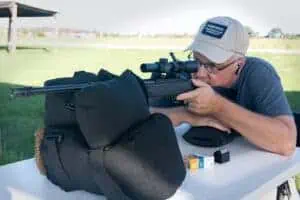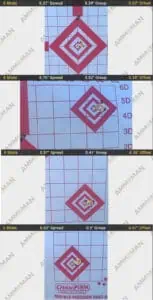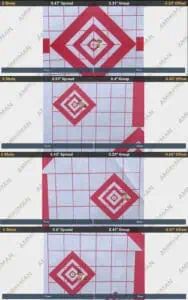What Do 10/22 Trigger Upgrades Actually Do?
Not too long ago, I wrote an article on improving rifle accuracy, where I laid out the basic steps to make a good rifle great, and a great rifle into a tack driver. In that article, I listed out some of the most-common upgrades to make your rifle more accurate, which included improving the stock trigger of your gun. But just how much of a difference does upgrading the trigger of your gun actually make? Will you recognize big improvement at the range with the right 10/22 trigger upgrades?
Shooters commonly turn to trigger upgrades along with other modifications to enhance the performance of a rifle. They’ll do things like swap-in a new barrel or stock or other accessory. To isolate how a better trigger increases accuracy, I’m going to take a dead-stock Ruger 10/22 and only improve the trigger on it. I’ll compare groups shot at 25 yards before installing the trigger upgrade and then after installation.
Drop In Accuracy Improvement
The specific 10/22 trigger upgrade I’ll be using is Ruger’s own BX Trigger, which is advertised as a drop-in trigger for the 10/22. This made it very appealing, as I am mechanically inept. I’m pleased to report that the trigger installed just as advertised. I was able to swap out triggers in just a few minutes using simple tools, literally using my kitchen table as a workbench. Kudos to Ruger for making a 10/22 trigger upgrade that installs as advertised.
Let’s pause for a moment to address how we talk about triggers. What seems like a simple idea (press the trigger and the gun goes bang) actually has four distinct phases:
- Pre-travel, the rearward motion of the trigger before the gun goes off
- Release, the moment when the trigger releases the hammer or striker and the gun goes bang
- Over-travel, movement of the trigger after the gun goes bang
- Reset, the forward movement of the trigger required to start the process all over again
How To Talk About Triggers
There are many different words like “takeup, “slack” and “break” used to describe portions of these actions. In general, though, a good trigger has the following characteristics.
Pre-Travel: The movement of the trigger back towards you should be consistent. The pressure required to move the trigger should stay the same. If the trigger moves without any pressure from the springs inside the gun, that’s called “slack.” If the pressure increases as you pull the trigger, we call that “stacking.” A good trigger has minimal slack and no stacking. Any changes in the amount of effort you need to pull the trigger can affect how your gun moves when you break the shot.
Gimme A (Trigger) Break
Release: A good trigger has a release point that’s definite and noticeable. A crisp, clean break right before the gun goes bang allows for a consistent trigger press, which in turn allows for greater accuracy. A mushy trigger, or a trigger with a poorly defined break, requires an uncertain amount of pressure on the trigger to fire the gun, which can lead to more movement of the gun during the trigger press. This, in turn, leads to decreased accuracy downrange.
Overtravel: Let’s assume you did everything correctly during the first two stages of a correct trigger press. The trigger pre-travel was smooth and consistent. The break on the trigger was smooth and definite, and the gun just went off with a loud bang. The bullet, however, is still in the muzzle, making its way out of the gun and headed towards the target. Any movement of the gun before the bullet flies out the barrel will affect the results downrange. This includes movement from pressing the trigger. Trigger movement after the bang, or overtravel can affect accuracy because your trigger finger is still in motion, even though the bullet hasn’t quite left the gun yet. Excessive amounts of overtravel is not something you want in a good trigger, so pay attention to how your trigger works before, during and after the shot.
Reset Your Expectations
Reset: Consistent results are the key to good accuracy, and a trigger with a distinct reset gives you a consistent point to start the process of firing your gun once more. The gun industry talks a lot about whether you should keep your finger on the trigger as it moves forward and resets (“riding the reset”) or whether it’s okay to move your finger off the trigger after it’s finished moving forward. I think it’s different for different shooting sports. If you’re shooting a run and practical pistol match, a good trigger reset is the least of your concerns. If you’re shooting precision rifle, however, resetting everything back to where you started becomes very important. Adjust your trigger discipline to the sport you’re shooting, and move on to other things.
In addition to all of this, the less effort you need to move the trigger, the less effect that movement has on where your gun is pointed when it goes bang. This is why guns that have a lower trigger pull, which is measured in pounds and ounces, tend to be more accurate than guns that require more force to move the trigger.
Putting The 10/22 Trigger Upgrades To The Test
Now that we’ve talked about what a good trigger is and how it affects our shooting, let’s take a look at how this 10/22 trigger upgrade will have on a target downrange. The ammo I’m using for this test is 40 grain Aguila Round Nose Match ammo. This ammo performed very well in our 22LR match ammo test, and it’s quite affordable compared to other match ammunition.
The rifle is a dead-stock Ruger 10/22 tactical which we’ve equipped with a Leupold 1.5x-4x scope. It’s the same rifle I used for my Appleseed match, and I’m very familiar with how it performs. I’ll shoot four five round groups, once with the stock trigger, and once with the upgraded trigger. The rounds will be fired from a rest at a target that’s 25 yards away, and we’ll measure the groups with the Ammoman Shot Group Analyzer. We will also measure trigger weight before and after we added the 10/22 trigger upgrade using a Lyman digital trigger scale.
10/22 Trigger Upgrade Test Results
Before:
Group 1: 0.39 inches
Group 2: 0.41 inches
Group 3: 0.39 inches
Group 4: 0.52 inches
Average Trigger Weight (4 measurements): 4.5 pounds
After:
Group 1: 0.29 inches
Group 2: 0.41 inches
Group 3: 0.31 inches
Group 4: 0.4 inches
Average Group Size: 0.35 inches
Average Trigger Weight (4 measurements): 2.5 pounds
Feels Better, Shoots Better
Clearly, installing one of the many different 10/22 trigger upgrades out there had an effect on marksmanship. The groups on the target were smaller with the better trigger, and the trigger itself was easier to pull. More than that, however, the gun felt better as I was shooting it. My shots with the stock trigger were more hesitant and more uncertain. The higher trigger weight of the stock trigger resulted in a longer time to pull the trigger for each shot. This in turn led to my scope wandering slightly off target and poorer results.
The Ruger BX trigger, on the other hand, required less force to move the trigger, and it had a shorter pre-travel as well. This meant that I could divert attention from pressing the trigger to keeping my sight on-target. The results on paper were minimal, less than half MOA. However, I can’t overstate the confidence this trigger upgrade gave me. The gun felt better in my hands as I fired each shot, and I believe that positive attitude had some effect on my performance.
Will adding a better trigger improve the accuracy of your rifle? Based on this test, I can confidently say it will. How much of an improvement tends on the trigger and your rifle, but even one of the many simple 10/22 trigger upgrades made a good rifle even better. None of this matters, though, if you can’t make the shot. Upgrade your shooting skills, and you’ll soon find out just how much more you’ll get from upgrading the trigger on your gun.





